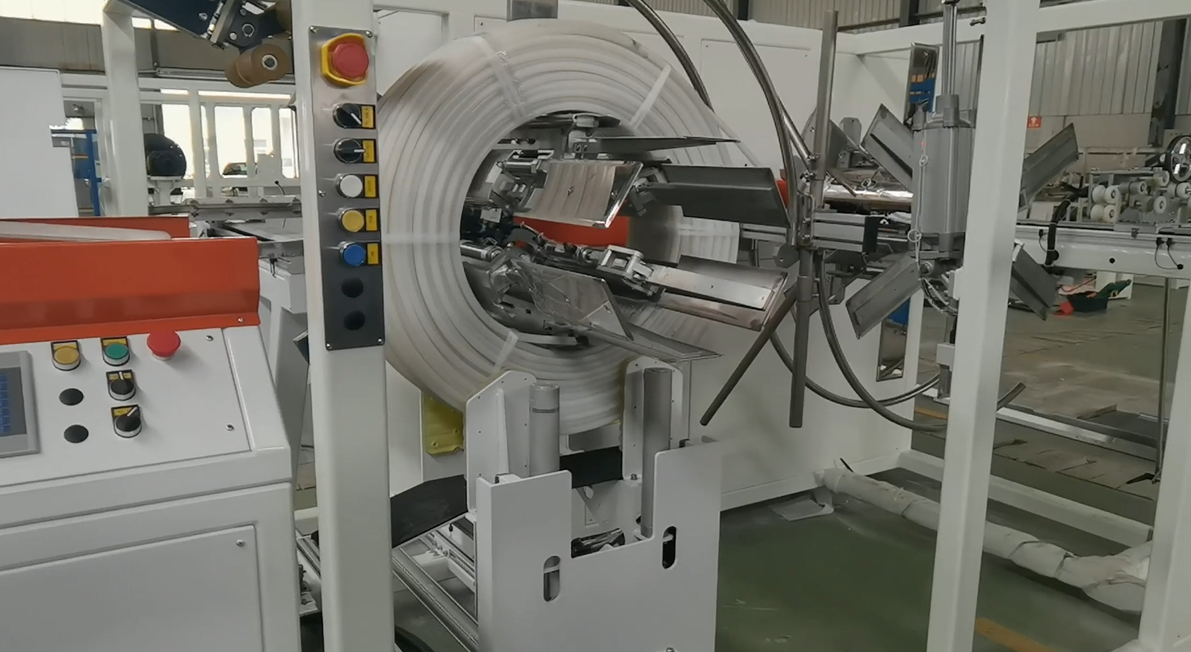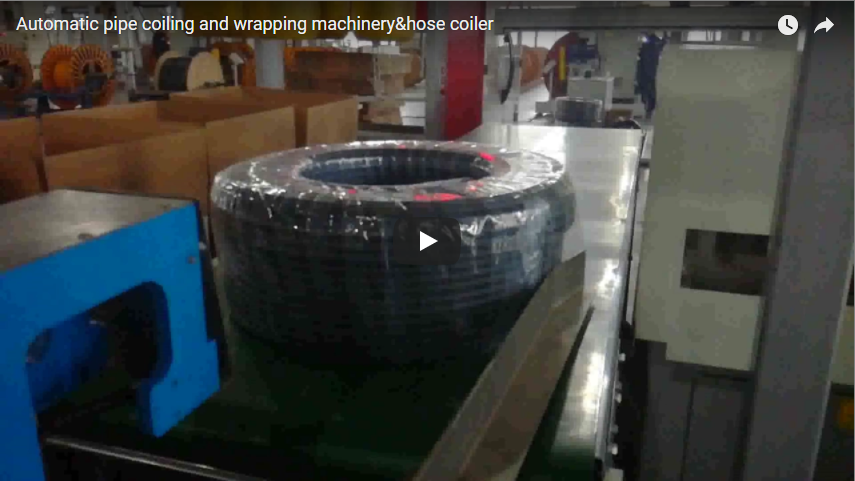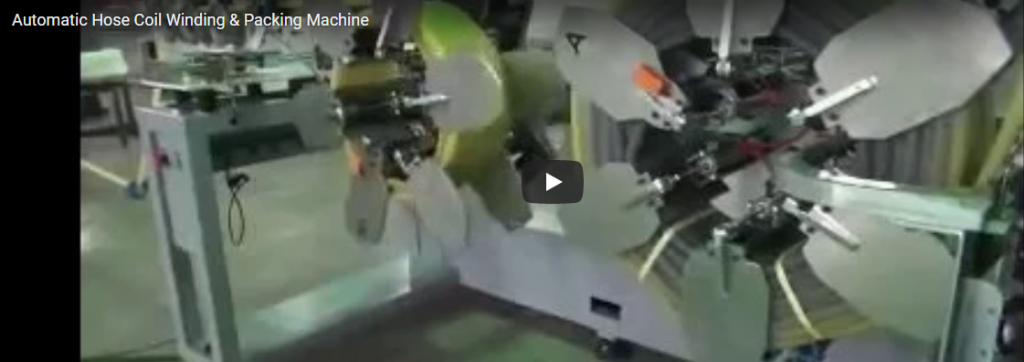Boosting Extrusion Line Efficiency: A Fabricator's Look at Fhope's Automatic Pipe Coiling and Strapping Machines
Manual coiling at the end of a pipe or hose extrusion line often feels like a bottleneck. It's labor-intensive, prone to inconsistencies, can limit overall line speed, and frankly, it's tough work. For fabricators looking to streamline operations and improve output quality, automating this final step is crucial. This is where specialized equipment, like the automatic coiling and strapping systems from Fhope Automatic Coiler Dept., comes into play. Let's take a closer look at the technology and the real-world benefits it offers.
(Video Description: Fhope automatic pipe coiling and strapping machine in operation, demonstrating the winding process, automated cutting, strapping application, and coil ejection.)
1. The Challenge: Manual Coiling vs. Automation Demands
In today's competitive manufacturing landscape, relying solely on manual or even semi-automatic coiling presents several hurdles:
- Labor Intensity: Requires dedicated personnel, often performing repetitive and physically demanding tasks.
- Inconsistent Quality: Coil tightness, dimensions, and strapping placement can vary significantly between operators and shifts.
- Speed Limitations: Manual coiling often dictates the maximum speed of the entire extrusion line.
- Safety Concerns: Manual handling of large or heavy coils carries inherent ergonomic risks.
- Material Waste: Improperly formed or strapped coils can lead to scrap or damage during handling and transport.
Automated systems aim to directly address these pain points, offering a pathway to higher efficiency and standardized quality.
2. Inside Fhope's Automated Coiling & Strapping Process
Fhope specializes in designing and manufacturing systems purpose-built to replace manual coiling efforts. Their machines integrate seamlessly into extrusion lines, handling a variety of flexible pipes and hoses. The core process typically involves:

- Synchronization: The coiler speed precisely matches the extrusion line output, often managed via a dancer arm accumulator for tension control.
- Accurate Winding: A traverse system guides the pipe or hose onto the coiling head, ensuring neat, level layers and consistent coil dimensions (Outer Diameter - OD, Inner Diameter - ID, and width).
- Automated Cutting: Once the preset length is reached, the pipe is automatically cut cleanly.
- Secure Strapping: Integrated strapping heads apply a preset number of straps (typically PP or PET) at designated points around the coil circumference, ensuring stability.
- Coil Ejection: The finished, strapped coil is automatically ejected onto a conveyor, accumulator table, or other downstream handling systems.
3. Key Technical Capabilities and Specifications
While specific configurations vary, typical technical parameters for Fhope automatic pipe coiling machines often include:
- Pipe/Hose Diameter Range: Designed to handle various sizes, commonly ranging from small tubes (e.g., 10mm) up to larger conduits (e.g., 63mm or more, depending on model).
- Coil Dimensions:
- Adjustable Inner Diameter (ID): e.g., 200mm - 800mm
- Adjustable Outer Diameter (OD): e.g., 400mm - 1400mm
- Adjustable Coil Width: e.g., 50mm - 500mm
- Line Speed Compatibility: Engineered to keep pace with modern extrusion lines, potentially handling speeds from 15 m/min up to 100 m/min or higher for specific applications.
- Materials Handled: Versatile enough for common plastic pipes and hoses like HDPE, PEX, PVC, corrugated conduit, multilayer pipes, and more.
- Strapping System: Typically utilizes PP (Polypropylene) or PET (Polyester) strapping, with adjustable tension and number of straps (e.g., 2, 3, or 4 points).
- Control System: PLC-based controls with HMI (Human-Machine Interface) for easy parameter setting (coil length, dimensions, strapping positions), diagnostics, and integration with the main extrusion line controls.
4. From the Shop Floor: Experiencing the Benefits
Moving from manual to automated coiling isn't just about new machinery; it's about transforming the workflow and achieving tangible results. Based on industry implementations, here’s what fabricators often experience:

- Drastic Reduction in Labor: Operators previously dedicated to manual coiling can often be reassigned to higher-value tasks. A single Fhope system effectively replaces the manual effort of multiple workers, especially on high-speed lines.
- Consistent, Sales-Ready Coils: Automation eliminates human variability. Every coil meets the programmed specifications for diameter, width, and tightness. Straps are applied precisely and securely, resulting in professional-looking packages ready for shipment. This directly impacts customer perception and reduces complaints related to transport damage.
- Increased Extrusion Throughput: The coiler ceases to be the limiting factor. Extrusion lines can potentially run at their optimal, higher speeds, significantly boosting overall production volume without adding labor.
- Improved Safety and Ergonomics: Automating the coiling and strapping process removes strenuous manual lifting and handling, reducing the risk of back injuries and repetitive strain for operators.
- Simplified Handling Downstream: Uniform, stable coils are easier to handle, stack, and palletize, streamlining warehouse operations and logistics.
5. Customization and Integration Flexibility
Fhope recognizes that one size doesn't fit all. They offer solutions tailored to specific needs:
- Free-Standing Coils: Standard configuration for many pipe/hose applications.
- Spooling Options: Some machines can be adapted or designed for winding onto spools instead of producing free-standing coils.
- Small Diameter Coil Packing: Specialized lines are available for coiling small diameter products and potentially incorporating automatic film wrapping or bagging.
- Handling Adaptations: Custom designs can address unique coil handling requirements or integration with specific downstream packing equipment.
- Changeover Capability: Designs often allow for relatively quick changeovers between different pipe sizes and coil configurations, maximizing machine uptime.
6. Is an Automatic Coiler Right for Your Operation?
Investing in an automatic coiling and strapping system like those offered by Fhope makes the most sense for manufacturers dealing with:
- Medium to high-volume production of flexible pipes, hoses, or conduits.
- Extrusion lines where manual coiling creates a bottleneck or limits speed.
- A need to improve coil quality consistency and reduce labor costs.
- Operations prioritizing operator safety and ergonomics.
Exploring automation in this area can yield significant returns through increased efficiency, improved product quality, and reduced operational overhead.
For detailed specifications on systems suited to your specific pipe or hose products, check out Fhope's dedicated page:
https://www.fhopepack.com/Hose-coiling-and-strapping-machine.html
To discuss your unique application requirements, you can reach out directly via email:
info@fhopepack.com






